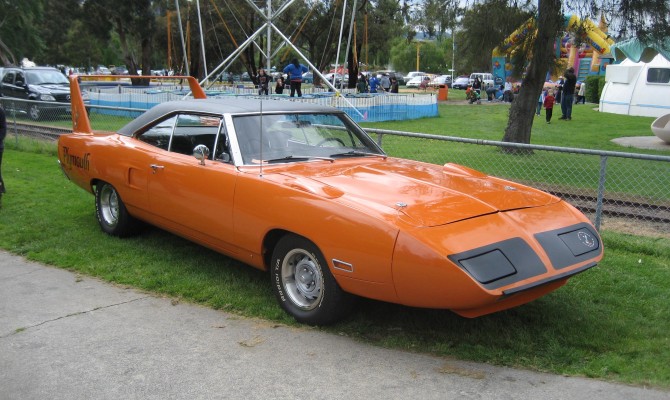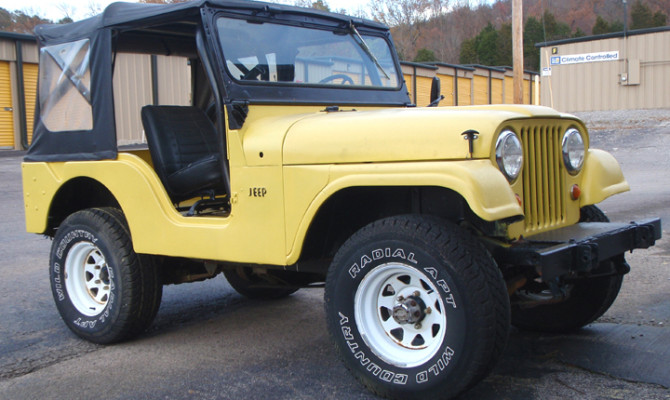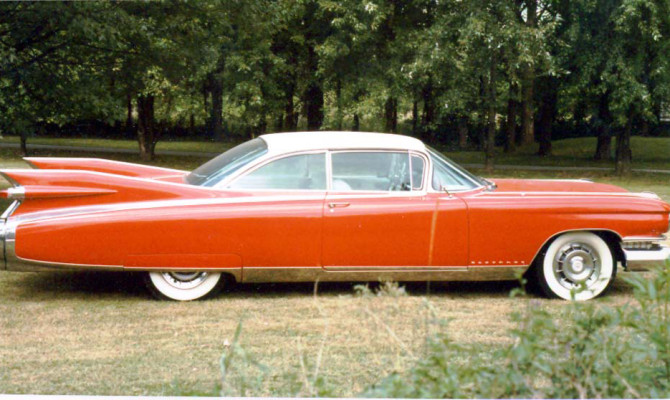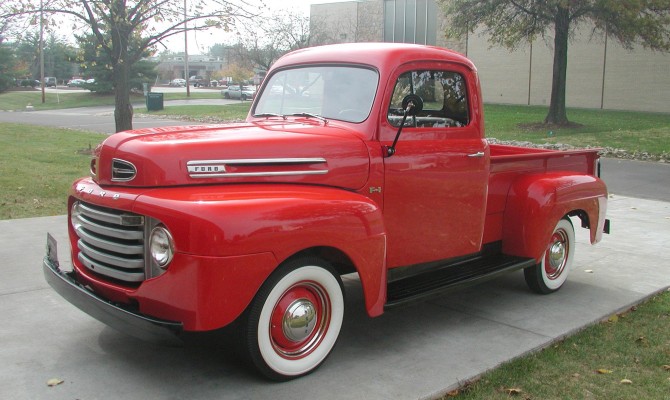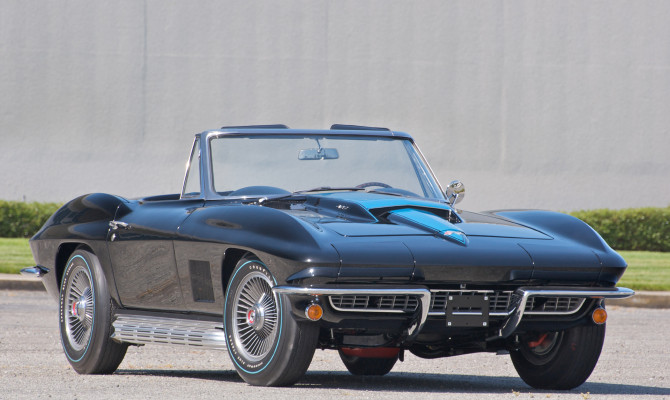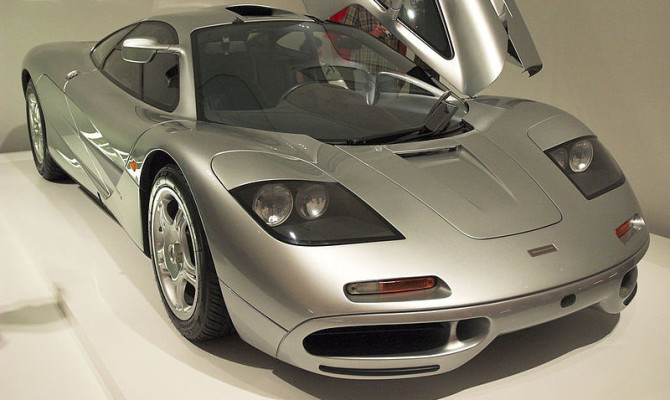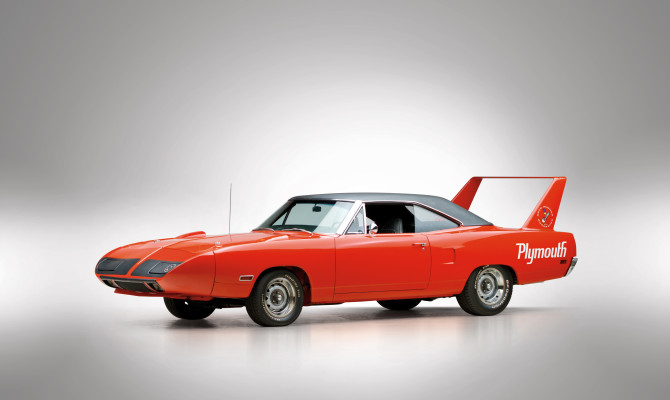Classic American cars, while full of style and presence, weren’t known for their ability to stretch miles out of a gallon of fuel.
These are five of are exceptions to the rule, all capable of at least 20 miles per gallon, which was good back in the day. (more…)
Automotive designers have been cribbing from each other since the dawn of the automotive era.
Often it’s less obvious to borrow from far away than from your own backyard. Witness the countless European-inspired American cars we’ve seen over the years (like the 1989-97 Ford Thunderbird, a virtual copy of the 1977 BMW 630 CSi). Europe has been known to return the favour on occasion, too, as anyone who has ever seen an Opel GT (which looks for all the world like a 2/3-scale ’68 Corvette) can attest.
The cars on this list dispense with any of that “hands across the water” nonsense. They couldn’t have come from anywhere else – they’re as proudly North American as it gets:
As over-the-top as anything got in the golden age of the American muscle car, the wild, aerodynamic nose cone and 11-story rear wing were designed to ensure NASCAR domination back in the days when the race cars actually had to resemble something you could go into a showroom and buy. Add the massively powerful and virtually handmade 426-ci hemi V-8, and you’ve got another “only in America” classic.
Jeep CJ-5
The CJ-5 was actually a variant of the Korean War-era military Jeep. Far more suited to civilian use than the WWII-era Jeep, the CJ-5 was a hot seller for American Motors, which took over Jeep’s parentage from the old Kaiser Automotive Group. Its familiar face is in every “greatest generation” newsreel and our favorite WWII/Korea movies from “Patton” to “M*A*S*H.” Few things say “America” like a Jeep CJ.
1959 Cadillac Eldorado Seville
Not only was the name of this car over-the-top (combining two names that would do just fine on their own), but it marked the high-water point for the tailfin fad inspired by the WWII Lockheed P-38 Lightning fighter plane. These were the Empire State Building of tailfins, with twin rocket-like tail lamps embedded in them. Any ’59 Caddy is a simply stunning work of art from an era of unmatched American optimism.
The Goat (which celebrates its 50th anniversary next year) can reasonably lay claim to starting the muscle car craze. The idea was to stuff a gigantic 389-ci V-8 into the smallest body possible (the Pontiac Le Mans). And although the name was a direct theft from Ferrari, nothing else about the GTO could have come from anywhere else but America. With Pontiac gone for good, another revival seems unlikely. May it rest in peace.
Ford F-Series: America invented the pickup truck with the 1925 Ford Model T pickup. And although everyone from Toyota to VW has dabbled in them, the center of the pickup universe will always be in the U.S. Perhaps the most quintessentially American pickup is the 1948-52 Ford F-Series.
Rob Sass is the vice-president of content for Hagerty Insurance. Hagerty is the world’s leading specialist provider of classic car and boat insurance. Learn more at hagerty.ca and you can email rsass [at] hagerty [dot] com.
As venomous snakes go, Cobras are wicked cool… (more…)
The 1976 Porsche 911 Turbo Carrera is probably the one most capable of preventing the fulfillment of one’s automotive bucket list…
With baby boomers seemingly more aware of their own mortality these days, “bucket lists” of things to do before one’s demise have become increasingly popular.
Here are five of the cars everybody should drive before kicking the bucket, taking the big dirt nap, biting the dust or, well, you get the idea:
1. 1967 Corvette L88
The L88 was the Corvette that ordinary civilians weren’t supposed to be able to buy. Rather, it was built to be taken racing by “privateers” (GM was still observing a ban on manufacturer supported racing). Although a regular production option, the L88 was expensive and came with almost no creature comforts. The horsepower was deliberately underrated on the option sheet to come in below the regular 427-cubic-inch 435-hp engine to further discourage Average Joe buyers. In reality, the L88 could make over 500 hp on racing fuel. Acceleration was shattering. It’s the ultimate classic Corvette Sting Ray.
2. 1967 Shelby Cobra 427
Carroll Shelby found that there was almost no spindly little British sports car that couldn’t be improved with the insertion of an American V-8. Under Shelby’s direction, the Sunbeam Alpine became the Sunbeam Tiger, and the AC Ace became the vaunted Shelby Cobra. The baddest version of the Cobra sported a 427-cubic-inch engine that was similar to the one developed for NASCAR. Cobras are hot, noisy and cramped, but they’re really the greatest expression of the muscle car ethos—cram the largest possible engine into the smallest package.
3. 1992-98 McLaren F1
The F1 was everything a supercar should be but so seldom is. Many modern supercars are as much a fashion accessory as a car. Nobody ever bought an F1 as a bauble. Because of the car’s somewhat minimalist nature, and the fact that it was offered only with a conventional three-pedal manual transmission, posers didn’t apply. It’s a reasonable certainty that Kanye West doesn’t own an F1. With three seats and a center driving position, plus reams of Formula One technology and incredible performance (0-60 in 3.2 seconds, ¼ mile in 11.6 and a top speed of 241 mph), the F1 is the one supercar that should be on any automotive bucket list.
4. 1976 Porsche 930
Of all the cars on this list, the earliest version of the Porsche 911 Turbo Carrera (otherwise known as the 930) is probably the one most capable of preventing the fulfillment of one’s automotive bucket list. Early 930s were somewhat diabolical cars with tires that were a bit too small and a turbocharger that lit up suddenly and with a vengeance. The turbo’s abrupt nature could make for scary driving at inopportune times (like the apex of a corner). But it’s the car’s ability to bite back that can make it so much fun and a genuine accomplishment to master.
5. 1970 Plymouth Road Runner Hemi Superbird
The Superbird appeals to anyone with a “stick it to the man” sensibility. It’s whole reason for being was to introduce the streamlined nose cone and giant wing into Chrysler’s NASCAR efforts back when NASCAR still had homologation requirements for race cars. Although available with Mopar’s excellent 440-cubic-inch V-8, it’s the 426 Hemi that belongs on anyone’s automotive bucket list. Between the view over the long hood and nose cone and the view out the back with the five-story-tall wing, the Superbird driving experience is like nothing else.
I have no desire to wade into the minefield that is the eternal “chick car vs. dude car” argument.
But it’s self-evident that the cars on this list most definitely have a “Y” chromosome. In fact, they positively ooze testosterone:
1. 1966-67 Shelby Cobra 427
Many people aren’t aware of the fact that the fire-breathing Cobra actually started out as a rather delicate British sports car, the AC Ace. Carroll Shelby saw the potential, installed a 260-cubic-inch Ford V-8, and it was good. But a 427-cubic-inch NASCAR engine was even better along with side-pipes and fat fenders. Performance was blistering and so was the noise.
2. 1970-71 Plymouth Hemi ‘Cuda
The new (back then) Mopar E-body forever broke the association with the old economy Valiant, and the Barracuda and its stablemate, the Dodge Challenger, were low, wide and particularly menacing.
The 426 Hemi V-8 made it one of the baddest of all time.
3. 1968 Corvette L88
This is the Corvette that ordinary civilians weren’t supposed to be able to buy. It was designed for the track at a time when GM was observing an official racing ban. L88s had no creature comforts (not even a heater) and overheated in the briefest of traffic jams. To further discourage non-racers, GM underrated the horsepower of the 427-cubic-inch engine, reporting it at around 400 hp. In reality, it was well over 500 hp.
4. 1969-73 Ferrari 365 GTB/4 “Daytona”
The Ferrari Daytona was one of the last V-12 front-engine Ferrari GTs that Enzo Ferrari personally had a hand in.
For almost every year it was in production, it was the fastest road car available in the U.S. with a top speed of more than 172 mph. Racer Dan Gurney and journalist Brock Yates won the infamous cross-country Cannonball Run in a Daytona going coast-to-coast in just under 36 hours.
All of the controls from the ultra-heavy clutch to the unassisted steering are like a workout machine set on maximum resistance.
5. 1976-89 Porsche 930
The 930 was like a 911 on steroids. Literally.
Choose your favorite juiced ballplayer from the ‘roids era and compare his forearms to the 930’s aggressively flared fenders and you’ll get it. Performance was otherworldly for the time with 0-60 times of under four seconds and sub-14-second quarter-mile times, bettering all but the most muscular of Detroit muscle cars (albeit at a very steep price).
The 930 could also bite back hard. Its rear-engine and “on or off” turbocharger made it easy to spin.
Recent Comments
- { Enjoyed your Forest of Bowland in the BMW X5M, particularly the photo of the BMW in front of the main part of Stonyhurst College where... }
- { Bantam designed the Jeep, not Willy's or Ford. The American military gave the original Bantam prototype to Willys and Ford to copy. There is plenty... }
- { All Escalades come with a 6.2-lilter V8 engine that produces 420 horsepower. A six-speed automatic is the only transmission offered and drives the rear wheels.... }
- { Alexandra is an excellent journalist. }
Popular Posts
- Journey to a ‘Sparkling’ Luxury Okanagan Resort “Four lucky readers will put a Dodge Journey’s weekend-...
- The Need For Speed: Hike Those Highway Limits More than half of those polled believe the province sho...
- Drives-U-Crazy… Erratic drivers. An early morning drive from Kelowna to Vancouver is nor...
- Readers Respond: The Pros and Cons of Increasing B.C. Speed Limits Increasing the speed limits will only increase risk to...
- Honda CR-V Review: The Compact Crossover To Get Things Done The CRV is a very stylish and aerodynamic crossover veh...


